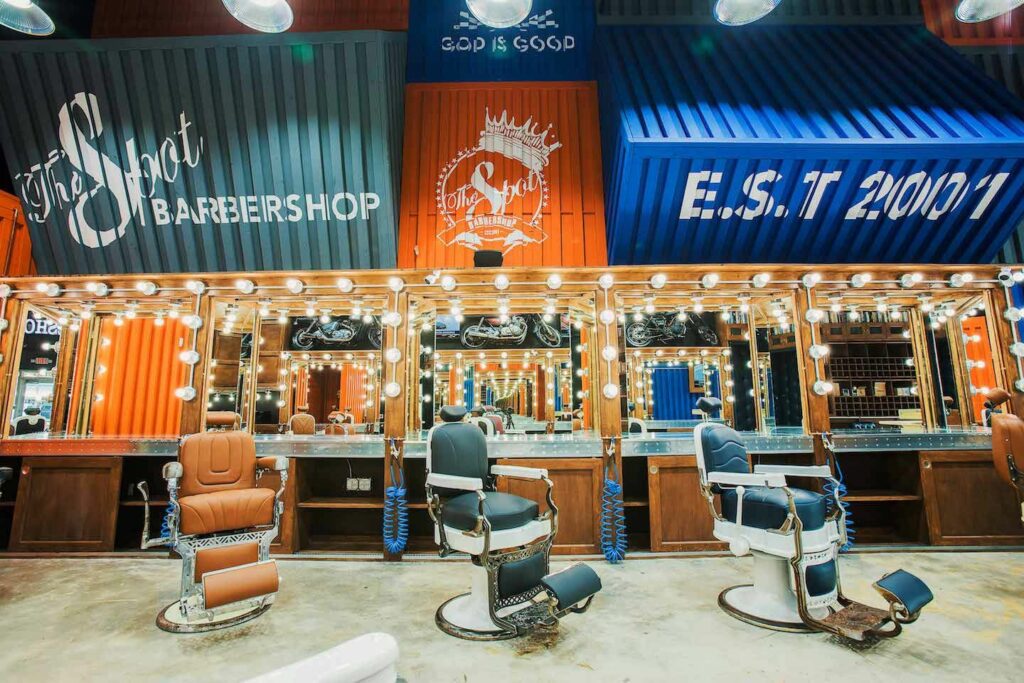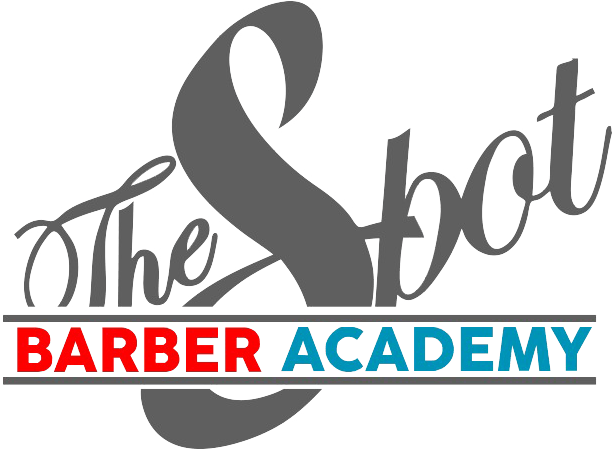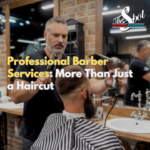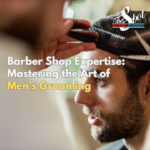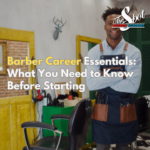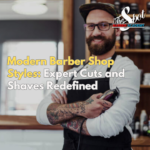Crafting the Perfect Hairstyle
In the world of barbering, the magic for Crafting the Perfect Hairstyle lies in the mastery of tools. The sound of scissors snipping and the gentle sweep of a comb are more than just routine motions; they are the artistry behind every great haircut. Welcome to our in-depth exploration of “Scissors and Comb: Crafting the Perfect Hairstyle,” where the seemingly simple tools of the trade become instruments of transformation. This blog post is not just about cutting hair; it’s about sculpting a masterpiece atop someone’s head, using skill, precision, and a deep understanding of the tools at hand. Whether you’re a seasoned barber or an aspiring stylist, understanding the nuances of these essential tools is the cornerstone of your craft.

Section 1: The Barber’s Essential Tools for Crafting the Perfect Hairstyle
The heart of every barber’s toolkit lies in two fundamental items: scissors and a comb. These are not just tools, but extensions of a barber’s hands, each with its unique purpose and technique.
Scissors:
A barber’s scissors are far more sophisticated than the average pair found in a household. They come in various types, each designed for specific tasks. The most common types include:
- Straight Scissors: Ideal for basic cutting and trimming, they offer precision and are the go-to for most hairstyling tasks.
- Thinning Scissors: These are used to thin out thick hair, adding texture and blending layers seamlessly.
- Long Blade Scissors: Perfect for cutting long hair and for techniques that require more coverage with each cut.
- Short Blade Scissors: These offer greater control for detailed work and are excellent for cutting around the ears and nape.
Choosing the right pair depends on the task at hand, the type of hair being cut, and the barber’s comfort.
Combs for Crafting the Perfect Hairstyle:
Combs come in an array of shapes and sizes, each serving a specific function. Some key types include:
- Tail Comb: Great for sectioning hair and creating precise lines.
- Wide-Tooth Comb: Ideal for detangling and combing through wet hair without causing breakage.
- Barber Comb: Typically used for most cutting techniques, offering the right balance of flexibility and rigidity.
The quality of these tools is paramount. A high-quality, sharp pair of scissors ensures a clean cut without damaging the hair, while a sturdy, well-designed comb can manage hair with ease and precision.
Maintenance:
Taking care of these tools is crucial. Regular cleaning, sharpening of scissors, and replacing combs when they show signs of wear ensures that they perform at their best.
Section 2: Understanding Hair Types and Textures
A barber’s expertise shines when they understand the diverse range of hair types and textures they encounter. Each type requires a different approach with scissors and comb.
- Straight Hair: Usually manageable with most scissors. Precision cuts are vital to maintain a clean, sharp look.
- Wavy Hair: Requires a combination of scissors to manage its unpredictability. Thinning scissors are often used to reduce bulk and create a more defined shape.
- Curly Hair: Presents a unique challenge due to its volume and tendency to frizz. Longer blade scissors help in creating layers and managing bulk, while a wide-tooth comb is essential for detangling.
- Coarse or Thick Hair: Thinning scissors become crucial here to remove weight and add texture. A strong, durable comb is necessary to handle the hair’s density.
- Fine Hair: Requires delicate handling. Short blade scissors are ideal for adding details and creating volume.
Understanding these differences is crucial in selecting the right combination of scissors and comb. It allows the barber to tailor their approach to each client, ensuring a haircut that not only looks good but also compliments the natural properties of their hair.
Section 3: Basic Cutting Techniques
Mastering basic cutting techniques is fundamental for any barber. The right method can transform a simple haircut into a work of art. Let’s explore some essential cutting techniques:
Point Cutting:
This technique involves cutting the hair at an angle, creating a textured and layered look. It’s perfect for adding volume and movement to the hair.
Layering:
By cutting hair at different lengths, layering adds volume and shape. It’s ideal for both thin and thick hair, providing a structured yet dynamic hairstyle.
Clipper Over Comb:
A vital skill for short haircuts and fades. The comb is used to lift the hair, and the clippers are run over it, allowing for precise control over the length and shape.
Scissor Over Comb:
Similar to clipper over comb, this technique uses scissors for a more textured and layered result. It’s excellent for blending and creating a seamless transition between different hair lengths.
Blunt Cutting:
This technique provides a clean, even edge. It’s commonly used for bobs or straight across bangs, where precision is key.
Each technique requires a steady hand and an understanding of how hair falls and behaves. Practice is essential to perfect these skills.
Section 4: Advanced Styling Techniques
Once the basics are mastered, a barber can explore advanced styling techniques. These methods require a higher skill level but offer creative and unique results:
- Razor Cutting: Using a razor instead of scissors can create soft, feathered edges, adding an edgy and textured look to the hairstyle.
- Undercutting: This involves cutting the hair very short underneath, with longer layers on top. It’s a popular choice for modern, edgy styles.
- Disconnection: This bold technique creates a sharp contrast in length between different sections of the hair. It’s a statement style that requires confidence and precision.
- Texturizing: Beyond thinning, texturizing adds depth and movement to the hair. This can be done using various scissors or even razors to achieve different effects.
- Personalization: This involves adapting and altering techniques to suit the individual’s facial features, hair type, and personal style. It’s the ultimate skill in customizing a haircut.
Advanced techniques like these allow a barber to push the boundaries of traditional hairstyling, creating truly personalized and innovative looks.

Section 5: Tips for Crafting the Perfect Hairstyle
Becoming a master barber involves more than just understanding techniques; it’s about perfecting the craft through practice and refinement. Here are some tips to help you elevate your barbering skills:
- Continuous Learning: The world of hairstyling is always evolving. Stay updated with the latest trends, techniques, and tools. Attend workshops, watch tutorials, and read industry publications.
- Practice, Practice, Practice: There’s no substitute for hands-on experience. Practice different cuts and styles on mannequins, or offer free sessions to friends and family to refine your skills.
- Focus on Detail: Attention to detail can make or break a hairstyle. Take the time to ensure every cut is precise, and every style is finished flawlessly.
- Understand Face Shapes and Features: Tailor hairstyles to complement your client’s face shape and features. This personalized approach will enhance their overall look and boost their confidence.
- Build Good Communication Skills: Effective communication with clients is key. Listen to their needs, understand their lifestyle, and provide professional advice to create the best hairstyles for them.
- Ergonomics and Posture: Maintain good posture and ergonomic practices to prevent strain and injury. This is crucial for a long and healthy career in barbering.
- Take Photos of Your Work: Documenting your work allows you to build a portfolio and track your progress. It’s also a great tool for attracting new clients.
- Customer Service: Providing excellent customer service goes a long way in building a loyal clientele. Be punctual, respectful, and attentive to each client’s needs.
By incorporating these tips into your routine, you not only perfect your technical skills but also enhance the overall client experience, which is invaluable in this profession.
Section 6: Keeping Up with Trends
Staying current with the latest trends in hairstyling is crucial for a barber. It keeps your skills relevant and your clients satisfied. Here’s how to stay in the loop:
- Social Media and Online Platforms: Follow industry leaders, influencers, and hairstyling platforms on social media. These platforms are often the first to showcase emerging trends and techniques.
- Fashion and Lifestyle Magazines: Regularly reading fashion and lifestyle magazines can provide insights into the latest styles and what might be popular in the coming seasons.
- Attend Hair Shows and Expos: These events are melting pots of creativity and innovation in hairstyling. They offer a firsthand look at upcoming trends and new tools.
- Collaborate with Peers: Networking with other professionals in the industry can provide new perspectives and ideas. Collaborations can be a great way to learn and stay inspired.
- Client Feedback: Listen to your clients. They often bring in new ideas and requests based on what they see and like. This can be a direct indicator of what’s trending.
- Experimentation: Don’t be afraid to experiment with new styles and techniques. Sometimes, setting a trend can be more impactful than following one.
By staying updated and adaptable to change, you position yourself at the forefront of the barbering industry, ready to meet the evolving demands of your clientele.
Section 7: Client Consultation and Satisfaction
A successful haircut goes beyond just technical skills; it’s also about understanding and fulfilling client expectations. The consultation process is crucial in achieving this.
- Effective Consultation: Begin each appointment with a thorough consultation. Discuss the client’s preferences, lifestyle, and any concerns they have about their hair.
- Visual Aids: Utilize pictures or portfolio images to help clients articulate the style they desire. This ensures both you and your client are on the same page.
- Assessing Hair and Scalp: Evaluate the client’s hair type, texture, and scalp condition. This will help you determine the best approach for their haircut and any treatments they may need.
- Setting Realistic Expectations: Be honest about what can be achieved with the client’s hair type and length. Managing expectations helps in achieving a satisfactory outcome.
- Building Trust: A client’s trust is earned through consistent quality and understanding. Listen to their needs and offer professional advice to guide them towards the best hairstyle.
- Follow-Up: Encourage clients to provide feedback after their haircut and offer advice on hair care and styling. This not only improves their satisfaction but also builds loyalty.
By mastering the art of consultation and client care, you elevate the experience from a simple haircut to personalized grooming service.
Section 8: Health and Safety in Crafting the Perfect Hairstyle
Health and safety are paramount in the barbering profession. Maintaining a clean and safe environment is essential for the wellbeing of both the barber and the client.
- Sanitation and Sterilization: Regularly sanitize and sterilize all tools, including scissors, combs, and clippers. This prevents the spread of infections and diseases.
- Personal Hygiene: Maintain good personal hygiene. Clean attire, washed hands, and neat grooming reflect professionalism and care for hygiene.
- Safe Handling of Tools: Use and store sharp tools like scissors and razors safely to avoid accidents. Ensure that electrical equipment is in good working condition.
- Ergonomic Practices: Use ergonomic tools and maintain proper posture while working to prevent repetitive strain injuries. A comfortable working environment benefits both the barber and the client.
- Allergy and Skin Sensitivity: Be aware of products that may cause allergic reactions or skin sensitivity in clients. Conduct patch tests if necessary and use hypoallergenic products when required.
- Emergency Preparedness: Be prepared to handle any emergencies, such as cuts or allergic reactions. Keep a first aid kit accessible and know basic first aid procedures.
Implementing these health and safety practices ensures a professional and responsible barbering environment, fostering trust and comfort among your clientele.
Conclusion: Joining Our Barbering Program to master Crafting the Perfect Hairstyle
In our journey through the intricate art of barbering and Crafting the Perfect Hairstyle, we’ve explored the essential tools, techniques, and skills required to master this craft. From understanding the nuances of different hair types to keeping up with the latest trends, the world of barbering is as diverse as it is dynamic. The ability to Crafting the Perfect Hairstyle is a blend of technical skill, artistic vision, and a deep understanding of your clients’ needs.
But mastering these skills doesn’t happen overnight. It takes practice, dedication, and the right guidance to transform passion into professional excellence. This is where The Spot Barber Academy comes in. Our program is designed to not only teach you the fundamentals of barbering but also to inspire creativity and excellence. With experienced instructors, hands-on training, and a supportive learning environment, we offer the perfect platform for aspiring barbers to hone their skills and embark on a rewarding career.
Whether you’re just starting out or looking to elevate your existing skills, The Spot Barber Academy is your gateway to becoming a master barber. Join our program and turn your passion for hairstyling into a successful, fulfilling career. Let’s shape the future of barbering, one Crafting the Perfect Hairstyle at a time.
